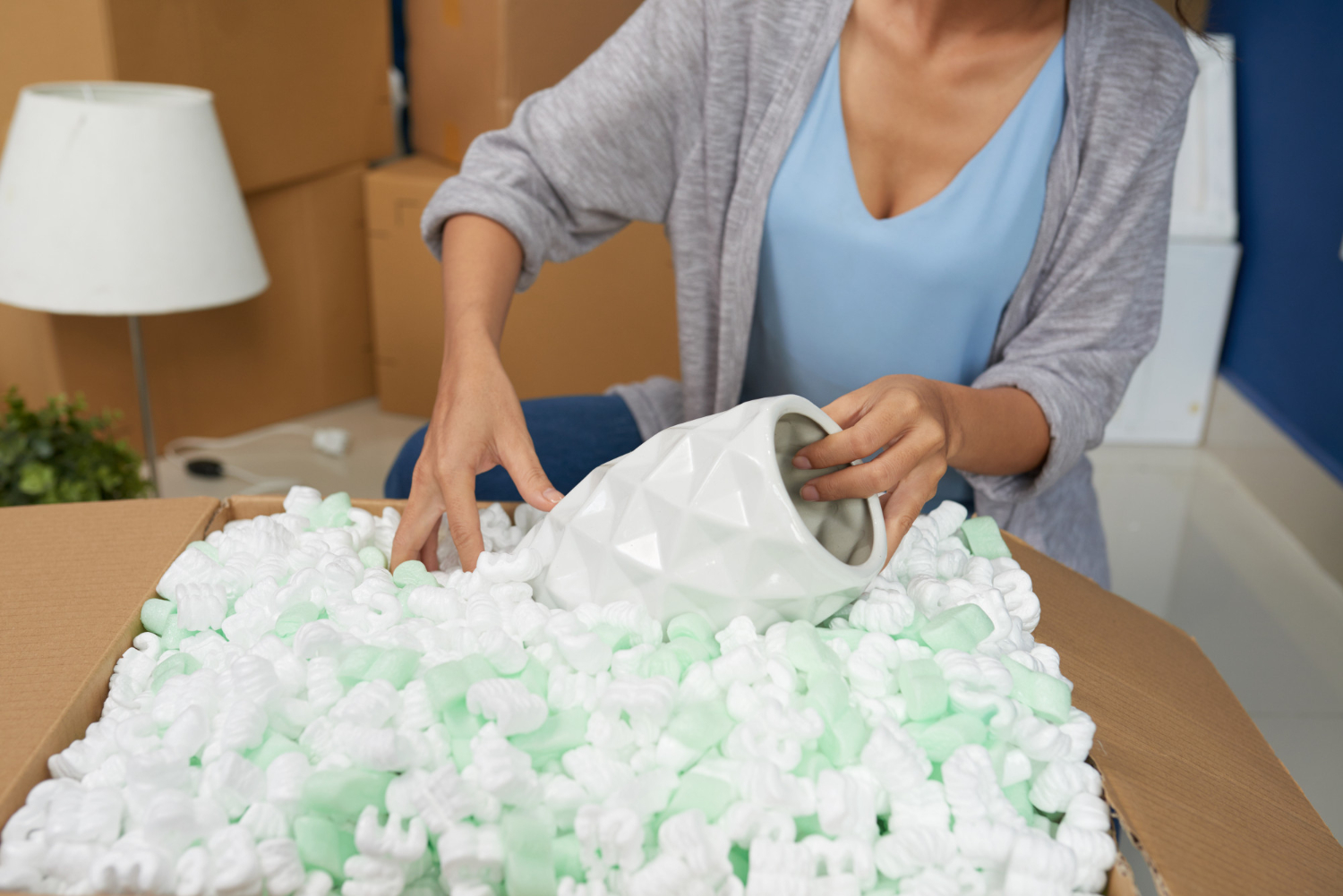Void fill is one of those packaging details you don’t always think about until a product arrives damaged or rattling in its box. It’s the material used to fill empty space in packaging to help cushion the product, keep it in place, and protect it from shock or movement during transit. From small electronics to heavy mechanical parts, choosing the right void fill plays a big role in preventing product damage and wasted resources.
The best choice depends on a few things, but product weight is one of the main factors. Too much fill adds cost and waste. Too little, and your product may not survive shipping. In the sections ahead, we’ll walk through how different materials stack up depending on weight and why making the right choice matters for both budget and product safety.
Understanding Product Weight And Void Fill Types
Getting the right void fill starts with knowing what you’re shipping. The weight of your product isn’t just a number. It determines how much protection your packaging will need and what type of material can offer that without going overboard.
Here are some of the most common void fill options, with an overview of how they function across different weight classes:
- Paper void fill: Lightweight, crumples easily, and works great for smaller or lighter items that don’t need major cushioning but do need protection from shifting.
- Foam inserts or loose fill: More protective and flexible in shape, this style supports medium-weight products while offering a secure fit that reduces the risk of movement.
- Air pillows: Best suited for moderate to heavy items, these inflated cushions are lightweight themselves but absorb shock well if sized and placed properly.
- Molded pulp: Ideal for heavy, fragile, or oddly shaped products, molded pulp adds a sturdy barrier and can conform to complicated shapes without sacrificing strength.
Weight affects how void fill absorbs shock, how it holds items in place, and what kind of impact forces it may need to withstand. For example, a lightweight item like a cosmetic jar and a dense metal tool might both fit in the same box, but they’ll need two different types of protection to keep them safe.
Using the wrong material can also impact sustainability goals. Overpacking a lightweight item with foam might protect it, but it creates unnecessary waste. On the other hand, using paper void fill for a heavy machine part might not provide enough strength and your product could arrive damaged. Understanding these differences helps you strike the right balance between performance and efficiency.
Paper-Based Void Fill For Lightweight Products
Paper-based void fill is a go-to option when you’re packaging lighter items. It’s flexible, easy to crumple or fold into shape, and offers a simple solution for keeping products from bouncing around during transit. If you’ve ever seen scrunched-up kraft paper used in shipping boxes, that’s exactly what we’re talking about.
This type of void fill works well for:
- Cosmetics and personal care items
- Phone accessories or chargers
- Apparel or soft textiles
- Office supplies like pens or notebooks
It doesn’t weigh a lot, which helps keep shipping costs down. You can quickly adjust the amount used just by tearing off more of the roll. Plus, because paper is widely recyclable, it checks the box for companies focused on using less plastic.
There’s one situation where paper void fill might not be the best. If the product is fragile, some items need more padding than paper alone provides. For example, bubble wrap or foam might be a better choice when shipping glass, even if it’s lightweight. But when you’re dealing with smaller, solid items that don’t require extra cushioning, paper gets the job done efficiently without added weight or waste.
Foam-Based Void Fill For Medium-Weight Products
Foam-based void fill steps up where paper stops performing. Medium-weight products, like handheld tools or boxed electronics, often need something that can absorb shock better and keep the item snug in place. Foam fits that job with a mix of structure, softness, and flexibility.
Loose fill foam, like peanut-style fillers, moves easily and fills gaps well. These work best when your products aren’t too sharp or heavy but still need to be cushioned from different angles. Foam sheets or rolls, on the other hand, are cut or rolled around the product and offer more directed protection. These are smart choices when you’re dealing with uniform or boxed shapes and want padding from all sides without shifting.
For example, let’s say you’re packaging a monitor or a small mechanical part. The weight feels too heavy for paper, but the part isn’t bulky or dangerous. Wrapping it in foam and bracing it with foam corners in the box can get it through transit safely while avoiding overpackaging.
Foam also works well in cases where surface protection matters. It doesn’t scratch, dent, or rub like some other materials might. This makes it useful for items with finishes or coatings that need to stay pristine once unboxed. It’s not always the lightest material, but when matched correctly with the product, it provides a balance of support and shock absorption you can count on.
Air Pillows And Molded Pulp For Heavy Or Fragile Items
Heavy equipment. Delicate electronics. Oddly shaped parts. These are the kinds of products that benefit most from air pillows or molded pulp. Not because they are one-size-fits-all, but because they offer strength without overbuilding the entire packaging setup.
Air pillows are lightweight but surprisingly strong for what they are. Inflated with air and placed around an item, they act like cushions that can take a hit without transferring the force to your product. These don’t work well for something overly sharp or extremely heavy on their own, but for things like large computer parts or boxed medical devices, they help keep things centered and safe inside the box.
Molded pulp, on the other hand, is a dense and shaped fiber material that fits items more like a custom insert. Think of it like a carton that conforms to the shape of your product. It supports weight well and can take more pressure without flattening or shifting. This makes molded pulp great for stacking heavy boxes during shipment while keeping the contents stable.
Here’s a basic way to figure out if one of these might make sense:
- Use air pillows for items that are bulky but not sharp or overly heavy
- Choose molded pulp for items that need protection from all sides or might face impacts during sorting and stacking
Keep in mind that both options help limit product movement but do it in different ways. Air pillows adjust easily and fill space quickly, while molded pulp needs upfront planning to fit the item shape but adds more long-term strength.
Match the Fill to the Need Before You Seal the Box
Getting the void fill right doesn’t have to be complicated. It comes down to knowing what the item weighs, how it fits in the box, and what kind of journey it’s going on. If it’s light and solid, paper may be enough. If it’s heavier or has delicate parts, foam or molded pulp becomes a smarter pick. Use the wrong kind and you risk crushing your product or blowing the packaging budget with overkill.
This is especially important when you’re shipping from Rochester or handling local operations through upstate New York. With temperature shifts and road conditions varying across seasons, the right internal protection helps limit risk. Choose the material that protects both your product and your time.
Your shipping box may be the first interaction a customer has with your item. If it arrives damaged or half-shifted inside, it reflects poorly regardless of what’s inside. That’s where void fill steps in. It’s not just about filling space. It’s about building confidence in the delivery. Different weights need different levels of care, and choosing the right material puts you ahead before the package even leaves the dock.
Choosing the right void fill for your products ensures they arrive safely and intact, reflecting well on your business. At Orcon Industries, we understand the diverse needs of different items, from lightweight cosmetics to fragile electronics. For a more comprehensive look into effective packaging strategies, explore how our industrial packaging solutions can enhance the safety and reliability of your shipments. Let us help you match the right protection to each product’s unique needs.




